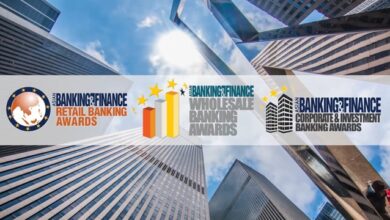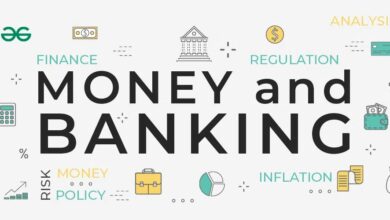Key Financial Trends Influencing 2025 Markets
Contents
- 1 Introduction
- 2 Table of Contents
- 3 1. AI and Automation in Financial Services
- 4 2. Central Bank Policies and Inflation Management
- 5 3. Sustainable Finance and ESG Priorities
- 6 4. The Rise of Digital Assets and Tokenization
- 7 5. Fintech Integration and Open Finance Evolution
- 8 6. Interest Rate Volatility and Global Bond Markets
- 9 7. Cybersecurity and Digital Risk in Finance
- 10 8. Globalization vs. De-Globalization in Trade Finance
- 11 9. Emerging Market Dynamics and Debt Restructuring
- 12 10. Real Estate and Alternative Asset Trends
- 13 11. Key Market Forecasts for H2 2025
- 14 12. Frequently Asked Questions (FAQs)
Introduction
As we progress through 2025, global markets are experiencing substantial changes driven by emerging financial trends. From the rapid integration of AI in asset management to shifts in central bank policies, economic forces are reshaping investment strategies, consumer behavior, and regulatory frameworks. Understanding these key financial trends is essential for investors, analysts, policymakers, and fintech professionals aiming to make informed decisions.
This professional and SEO-optimized article explores the major financial trends that are defining market behavior in 2025, aligning with Google AdSense and Search Console standards for visibility, engagement, and monetization.
Table of Contents
- AI and Automation in Financial Services
- Central Bank Policies and Inflation Management
- Sustainable Finance and ESG Priorities
- The Rise of Digital Assets and Tokenization
- Fintech Integration and Open Finance Evolution
- Interest Rate Volatility and Global Bond Markets
- Cybersecurity and Digital Risk in Finance
- Globalization vs. De-Globalization in Trade Finance
- Emerging Market Dynamics and Debt Restructuring
- Real Estate and Alternative Asset Trends
- Key Market Forecasts for H2 2025
- Frequently Asked Questions (FAQs)
1. AI and Automation in Financial Services
Key Developments:
- AI is streamlining risk modeling, fraud detection, and portfolio optimization.
- Robo-advisors now manage over $3 trillion globally.
- Machine learning models improve predictive analytics in stock and credit markets.
| Application | Impact |
|---|---|
| Risk Assessment | Faster credit scoring |
| Trading Algorithms | Reduced human error |
| Chatbots & Support | Enhanced customer experience |
2. Central Bank Policies and Inflation Management
After years of monetary stimulus, central banks are tightening liquidity.
Notable Moves:
- The Bank of England increased rates to 5.25%.
- ECB and Fed signal more data-driven decision-making.
Consequences:
- Increased borrowing costs
- Lower stock market valuations
- Shift to fixed-income securities
3. Sustainable Finance and ESG Priorities
Environmental, Social, and Governance (ESG) metrics are now central to portfolio strategies.
ESG Growth:
- 68% of institutional investors prioritize ESG-compliant funds.
- Green bonds issuance hit $600B in H1 2025.
Key Drivers:
- Climate regulations in the EU and UK
- Youth-led investor activism
- Carbon disclosure mandates
4. The Rise of Digital Assets and Tokenization
Digital finance is disrupting traditional asset classes.
Key Trends:
- Central Bank Digital Currencies (CBDCs) rolled out in 10+ countries
- Asset tokenization enabling fractional ownership in real estate and art
- Crypto ETFs gain mainstream traction
| Asset | Traditional | Tokenized |
|---|---|---|
| Real Estate | £500K property | £5K tokens |
| Artwork | Auction sale | Blockchain shares |
5. Fintech Integration and Open Finance Evolution
Fintech’s role in democratizing finance continues to expand.
Developments:
- Rise in Banking-as-a-Service (BaaS) platforms
- Widespread Open Finance API adoption
- Mergers between legacy banks and fintechs
Challenges:
- Regulatory lag
- Cybersecurity threats
- Cross-border standardization
6. Interest Rate Volatility and Global Bond Markets
Bond markets are in flux amid tightening monetary conditions.
2025 Highlights:
- High-yield corporate bonds outperforming government debt
- Inverted yield curves in key economies
- Flight to safety in U.S. and German bonds
7. Cybersecurity and Digital Risk in Finance
As digital finance grows, so do threats.
Emerging Threats:
- Deepfake fraud in customer onboarding
- Phishing attacks targeting crypto wallets
- Third-party vendor vulnerabilities
Mitigation Strategies:
- AI-based threat detection
- Regulatory tech (RegTech) integration
- Staff cybersecurity training
8. Globalization vs. De-Globalization in Trade Finance
Geopolitical tensions and supply chain disruptions are reshaping global trade.
Trends:
- Increased localization of supply chains
- Sanctions and trade barriers
- Currency wars impacting cross-border settlements
| Country | Action | Effect |
|---|---|---|
| UK | Tightened exports | Supply shortages |
| China | Boosted domestic production | Reduced imports |
9. Emerging Market Dynamics and Debt Restructuring
Developing nations face rising debt levels amid slow recovery.
Key Trends:
- Sovereign defaults in Latin America
- IMF-led bailouts in Africa
- Local currency bond expansion
Implications:
- Risk of contagion
- Investor flight to developed markets
- Renegotiation of bilateral loans
10. Real Estate and Alternative Asset Trends
Changes in Investment Preferences:
- Commercial real estate under pressure from hybrid work models
- Residential property remains strong in suburban markets
- Surge in private equity and hedge fund allocations to farmland and collectibles
2025 Top Alternative Assets:
- Farmland funds
- Wine and whiskey casks
- Carbon credits
11. Key Market Forecasts for H2 2025
| Market | Forecast |
|---|---|
| S&P 500 | +6.5% annual growth |
| Gold | $2,150/oz by December |
| Crypto (BTC) | $85,000 projected peak |
| UK Property | 3.8% regional growth, 1.2% in London |
12. Frequently Asked Questions (FAQs)
Q1. What is the biggest financial trend in 2025?
AI in financial services is reshaping everything from risk analysis to investment advisory.
Q2. Are ESG investments still growing?
Yes, driven by regulation, investor demand, and climate risks.
Q3. How are interest rates affecting the market?
Higher interest rates are slowing credit growth but benefiting savers and bondholders.
Q4. What is tokenization in finance?
It’s the process of converting real-world assets into digital tokens tradable on blockchain networks.
Q5. Will real estate remain a stable investment?
Suburban and alternative real estate continue to offer resilience despite commercial sector slowdowns.
Conclusion:
The financial world in 2025 is evolving at a pace unmatched in recent decades. With AI, sustainability, and digital transformation leading the charge, staying informed and adaptable is critical for success in investment and financial strategy.






